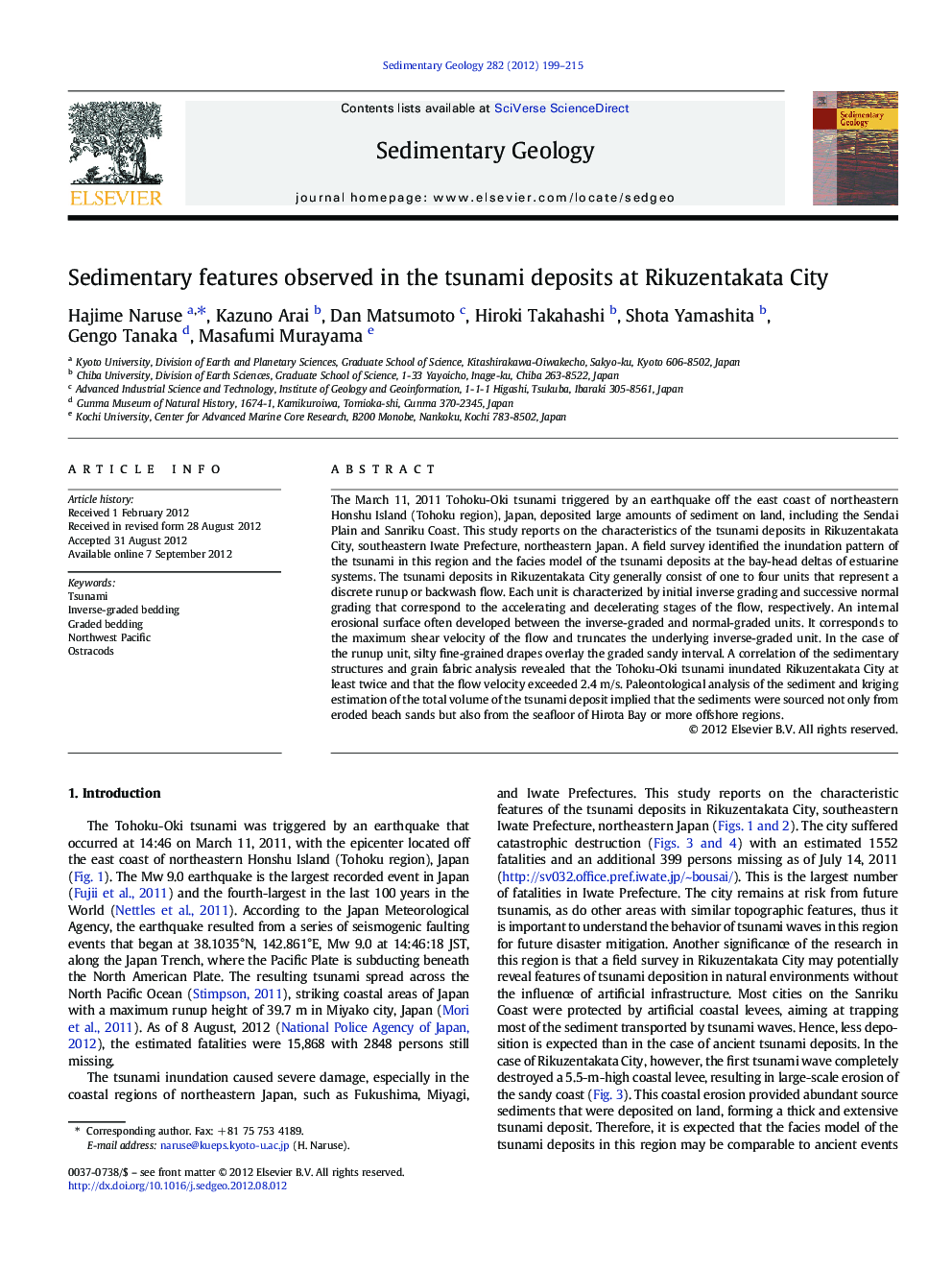| Article ID | Journal | Published Year | Pages | File Type |
|---|---|---|---|---|
| 4689628 | Sedimentary Geology | 2012 | 17 Pages |
The March 11, 2011 Tohoku-Oki tsunami triggered by an earthquake off the east coast of northeastern Honshu Island (Tohoku region), Japan, deposited large amounts of sediment on land, including the Sendai Plain and Sanriku Coast. This study reports on the characteristics of the tsunami deposits in Rikuzentakata City, southeastern Iwate Prefecture, northeastern Japan. A field survey identified the inundation pattern of the tsunami in this region and the facies model of the tsunami deposits at the bay-head deltas of estuarine systems. The tsunami deposits in Rikuzentakata City generally consist of one to four units that represent a discrete runup or backwash flow. Each unit is characterized by initial inverse grading and successive normal grading that correspond to the accelerating and decelerating stages of the flow, respectively. An internal erosional surface often developed between the inverse-graded and normal-graded units. It corresponds to the maximum shear velocity of the flow and truncates the underlying inverse-graded unit. In the case of the runup unit, silty fine-grained drapes overlay the graded sandy interval. A correlation of the sedimentary structures and grain fabric analysis revealed that the Tohoku-Oki tsunami inundated Rikuzentakata City at least twice and that the flow velocity exceeded 2.4 m/s. Paleontological analysis of the sediment and kriging estimation of the total volume of the tsunami deposit implied that the sediments were sourced not only from eroded beach sands but also from the seafloor of Hirota Bay or more offshore regions.
